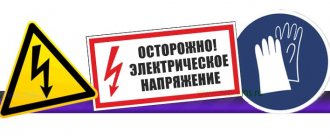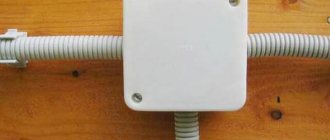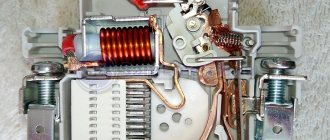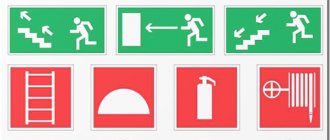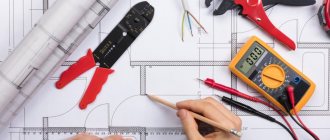Instructions for labor protection when performing electrical installation work in existing electrical installations
Local regulations of a manufacturing enterprise are valid on the territory of the organization itself and apply either to all employees or to a certain group of officials to whom they are addressed. One of the most important acts in the company is the instruction on labor protection for electricians or other specialties who are directly involved in this type of work. State acts to ensure the safety of employees during activities related to electricity pay special attention, regardless of the typical profession, be it an auto electrician, a high-altitude worker, an electrician, an electrician of electrical equipment, a network electrician, or a premises repair electrician.
Basic safety when handling electrical installations during the work process
As a rule, all these professions are directly related to the negative impact of electric current and in order to minimize the possibility of negative consequences, it is imperative to create a special internal document and comply with special regulations, which are safety precautions when performing electrical installation work. Such a document contains a list of requirements for behavior, as well as sections on the safety of labor activities in the field of legal relations.
Important! In addition, during inspection actions by government agencies, it is mandatory to check the presence of such instructions and the procedure for implementing its instructions. If violations are detected against officials, administrative violation protocols are drawn up.
A stand describing the necessary measures to ensure the safety of the labor process
General safety requirements
The general provisions of the document contain standard requirements and take into account the specifics of the organization in this area. According to these rules, the working day procedure, the use of certain protective equipment, the status of the employee himself, the receipt of equipment during the work process, new legislation on labor protection, as well as the procedure for setting up and servicing entrusted equipment are determined.
Safety requirements before starting work
Before starting any work involving exposure to electric current, the employee must be briefed on safety precautions at work. Instruction is especially important when carrying out adjustment and commissioning types of work that are associated with new or repaired equipment. After carrying out such activities, the worker puts a special mark in the logbook.
Basic requirements for a worker when working with electricity
Safety requirements during operation
During work activities, the employee is obliged to comply with instructions and labor safety rules, be sure to use all protective equipment and avoid emergency situations. He must also be guided by the orders of management for carrying out routine maintenance.
Safety requirements in emergency situations
In the event of an emergency, the worker is obliged to report this fact to the work supervisor, use primary protective equipment to minimize the consequences of the accident, provide assistance to the injured, or, in a certain situation, leave the work site through special emergency exits.
Typical protective equipment when working with live installations
Safety requirements upon completion of work
At the end of their work, the working personnel must notify management of its completion and hand over the used protective equipment, as well as insulation equipment, for signature, and note it in the work log.
Electric installation work
- Work with voltages up to 1000 V should be carried out with tools with securely insulated handles. Insulation should be carried out in the form of a cover and a permanent coating based on moisture-, oil-, petrol-resistant and electrical insulating material. According to existing rules, the length of the handle insulation must be at least 100 mm, and the insulation of screwdrivers ends at a distance of no more than 10 mm from the end of the blade.
- Before starting to work with a power tool, you should make sure that: punching holes and grooves in walls, ceilings with electrical wiring, performing other work that could damage the insulating coating of cables (installing the same water pipes) is possible only after disconnecting them from the power source.
- All screws and fastening parts must be well tightened;
- The gearbox must be in good working order (first turn off the electric motor and turn the spindle by hand);
- The insulation and wires of the power tool must not be damaged or broken wires;
- Grounding and switches must be in good working order (tools with secondary insulation do not require grounding).
- The use of defective power tools is prohibited.
If you use a soldering iron during work, make sure that it is always in the working area of the hood in its working condition. It is impossible to shake off the remaining solder when soldering, and its excess is removed on a special stand. During breaks, the electric soldering iron is placed on a special stand with metal brackets. It is prohibited to eat (eat) in the room or premises where soldering is taking place.
When carrying out electrical installation work, soldering irons are used that are powered by alternating current and a voltage of no more than 42 V. Constant use of 220 V electric soldering irons is allowed if they are powered from an isolation transformer/through a disconnect device.
Precautions are taken when testing installed equipment
- The first test switching is carried out in the absence of people near the live parts of the installation;
- Also, test switching is carried out after checking the compliance of all installation diagrams with project documentation and contact connections in the circuit elements.
- During work, it is necessary to strictly follow the safety rules. This will help avoid serious injuries that an inexperienced technician could receive.
- If a serious breakdown suddenly occurs, then it is necessary to call an electrician who has knowledge of repairing electrical installations. An electrician must know safety precautions.
- You can carry out minor repair work on a switch, socket or cable yourself. You don't need any special knowledge or skills for this. At the same time, it is worth remembering the main rule: before starting repairs, be sure to turn off all electricity in the house.
- It is important to remember that the human body has little resistance, so it is an excellent conductor of electric current. Also, water is a good conductor of current. If you touch water while working with electrical appliances, namely a bare wire, you will receive an electric shock, which can cause paralysis of the heart and breathing, and as a result, death.
Occupational safety training program for electrician
Safety precautions during welding work
Institutions related to electricity have a special training program for standards and requirements in the field of labor protection. Such training is carried out for all citizens involved in such work by a responsible official who is vested with the powers of a labor protection specialist. This program contains the main provisions in the field of ensuring safe work activities, as well as ways to implement a safe work process.
OCCUPATIONAL SAFETY REQUIREMENTS AFTER COMPLETION OF WORK
5.1. Remove barriers and prohibition signs. 5.2. Resume the power supply after the equipment is ready for further use. 5.3. Remove tools and unused materials. 5.4. Complete the appropriate electrical installation and electrical equipment documentation. 5.5. Notify the operational (responsible) employee servicing the facility about the completion of work. 5.6. Take off and put in order special clothing and safety shoes. 5.7. Wash your face and hands with warm water and soap, and take a shower if necessary. 5.8. Report all comments and malfunctions that occurred during work to your immediate supervisor.
Lighting of workplaces and requirements for lamps
Safety precautions during plumbing work
A mandatory requirement when carrying out preventive, routine or repair work is the availability of sufficient lighting, both for the workplace and for the equipment. This requirement is established by law - the units of measurement are Lux, and measurements of the proper level of lighting are carried out by a labor protection specialist. If the required indicator is not available, additional light sources are installed.
Types of possible injuries
- Tissue bruises from rotating parts.
- Eye injuries from dust or small chips. For example when drilling.
- Electrical burns resulting from body contact with current sources.
- Problems in the lungs when dust from some composite materials (MDF or fiberglass, etc.) gets in there.
All of the above can be avoided only through precise and strict adherence to safety precautions, which are regulated by law and GOST. Below you can find the basic rules, subject to which, installation and replacement, as well as adjustment of electrical appliances, will take place without unpleasant incidents.
Waterproofing materials: properties and application
Safety rules for blasting
When working with electricity, special insulating materials play a significant role, which do not allow electricity to spread outside the installation. Particular attention is paid to waterproofing substances, since water is an excellent conductor of electricity. Such materials must be made according to standards and GOST, and be marked accordingly indicating the maximum voltage.
Important! In high voltage installations their use is mandatory.
OCCUPATIONAL SAFETY REQUIREMENTS BEFORE STARTING WORK
2.1. Before starting work, you must: — put on overalls and safety shoes, fastening and tucking them in so that it is comfortable and safe to work in them; — check the availability and serviceability of tools, instrumentation, and devices; — check the availability, serviceability and timing of the next test of electrical protective equipment; — receive a task completed in the prescribed manner (permission work order or order); — receive instructions (if necessary) against signature in the work permit. 2.2. Depending on the external conditions and the work being carried out, use appropriate protective clothing, check the availability and serviceability of personal protective equipment, devices and tools used in the work. 2.3. If a malfunction of devices, tools, or protective equipment is detected, you must inform your immediate supervisor. It is prohibited to use faulty electrical protective equipment or those with an expired test period. 2.4. Before starting work, it is necessary: - to make the necessary shutdowns and take measures to prevent the supply of voltage to the work site due to erroneous or spontaneous switching on of the switching equipment; — on manual drives and on remote control keys of switching equipment, hang posters “Do not turn on people working” or “Do not turn on - work on the line”; — check the absence of voltage on live parts; — apply grounding (turn on grounding blades or install portable grounding); - if necessary, fence off workplaces and live parts remaining under voltage, hang up a sign “Stop! Voltage"; — inform the responsible employee of the facility where the work is planned about the start and end times of the work, in order to timely take measures for the trouble-free shutdown of technological processes; — if necessary, stop the movement of vehicles on the territory of the facility; - after stopping the technological process, make sure that there are no strangers in the area of effect of the order or order; — carry out technical measures to ensure the safety of work specified in the work order or order. If the specified measures are not enough, or they do not ensure the safe execution of work, request the issuance of a new work order or order with the deficiencies eliminated; - it is not allowed to independently make decisions on changing the security measures specified in the work order or order.
Electric shock
In the event of an emergency and electric shock, the employee must act according to the instructions:
- notify government authorities and medical services about the incident;
- notify your own management about the occurrence of an accident;
- provide first aid to the victim if you have a first aid kit;
- minimize the consequences for equipment to avoid fires and fires.
Carrying out practical work using primary protection equipment
As a result, compliance with such a document as the occupational safety instructions for electricians 2022 significantly reduces the likelihood of electric shock, as well as the occurrence of an emergency or other dangerous situation at work. In addition, compliance with this act is an integral requirement of state supervision in current legal relations.
REMINDER about fire safety requirements when operating electrical equipment
REMINDER
ABOUT FIRE SAFETY REQUIREMENTS
WHEN OPERATING ELECTRICAL EQUIPMENT
It is prohibited to leave electrical installations and household electrical appliances un-energized at the end of working hours in rooms where there is no staff on duty, with the exception of emergency lighting, fire protection systems, as well as other electrical installations and electrical devices, if this is due to their functional purpose and (or) provided for by the requirements Operating Instructions.
Prohibited:
a) operate electrical wires and cables with visible insulation defects;
b) use sockets, switches, and other electrical installations that are damaged;
c) wrap electric lamps and lamps with paper, cloth and other flammable materials, as well as operate lamps with removed caps (diffusers) provided for by the design of the lamp;
d) use electric irons, electric stoves, electric kettles and other electric heating devices that do not have thermal protection devices, as well as in the absence or malfunction of thermostats provided for by the design;
e) use non-standard (homemade) electric heating devices and use non-certified electrical circuit protection devices;
f) leave electric heating devices, as well as other household electrical appliances, unattended, connected to the electrical network, including those in standby mode, with the exception of electrical appliances that can and (or) must be in 24-hour operating mode in accordance with the manufacturer’s instructions;
g) place (store) flammable (including flammable) substances and materials in electrical panels (at electrical panels), near electric motors and starting equipment;
h) when carrying out emergency and other construction, installation and restoration work, as well as when turning on the electric heating of vehicles, use temporary electrical wiring, including extension cords, surge protectors, which are not intended by their characteristics to power the electrical appliances used.
Lens spotlights, spotlights and spotlights must be placed at a distance safe from flammable structures and materials, specified in the technical operating conditions of the product. Light filters for spotlights and spotlights must be made of non-flammable materials.
Remember that neglecting these requirements leads to a fire, which can lead to large material losses and loss of life!
Fire safety requirements for the operation of electrical equipment [13.48 Kb] [docx] (file uploaded: 03/18/2019) (downloads: 347)
SUFPS helpline No. 10
8-(351-91)-6-29-13
Tishkin Ilya Nikolaevich
Investigator of the FGPN branch of the Special Directorate of the Federal Border Guard Service No. 10 of the Ministry of Emergency Situations of Russia
456080, Trekhgorny, st. Zarechnaya, 13
Phone: +7 (35191) 6-25-38
